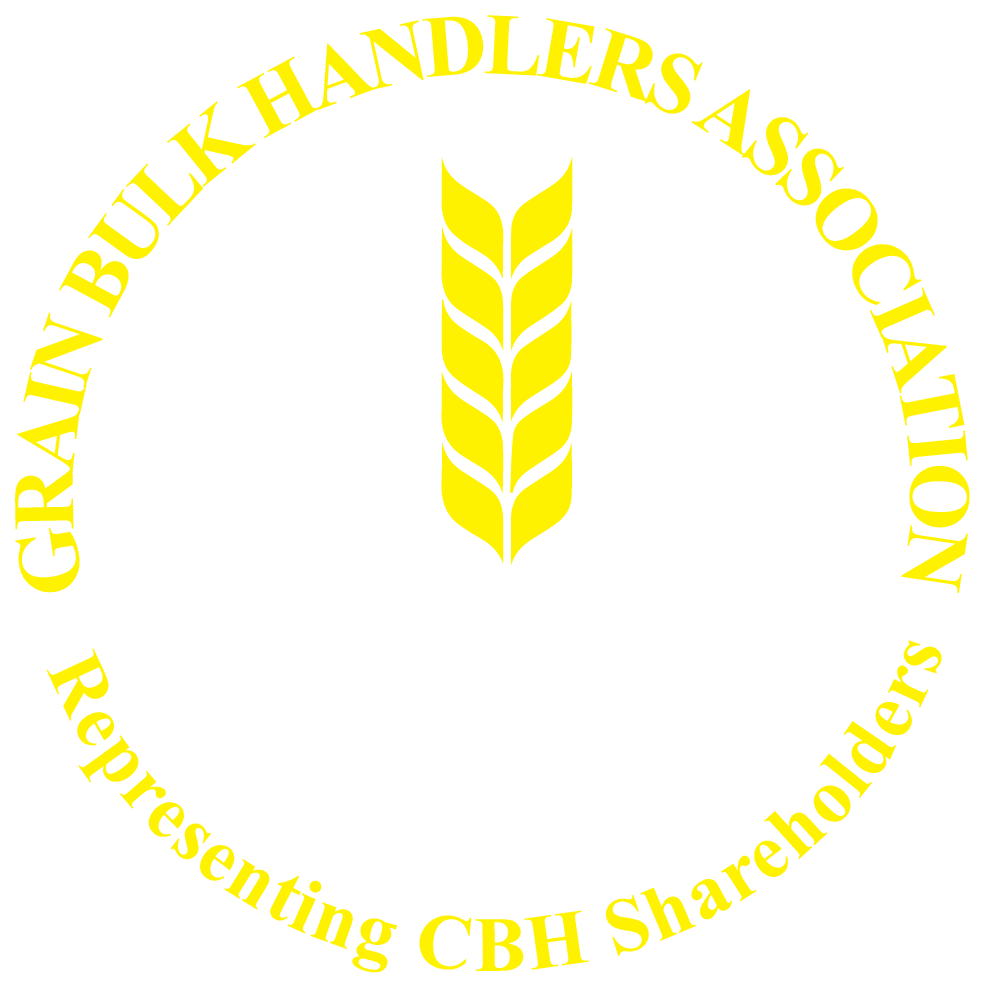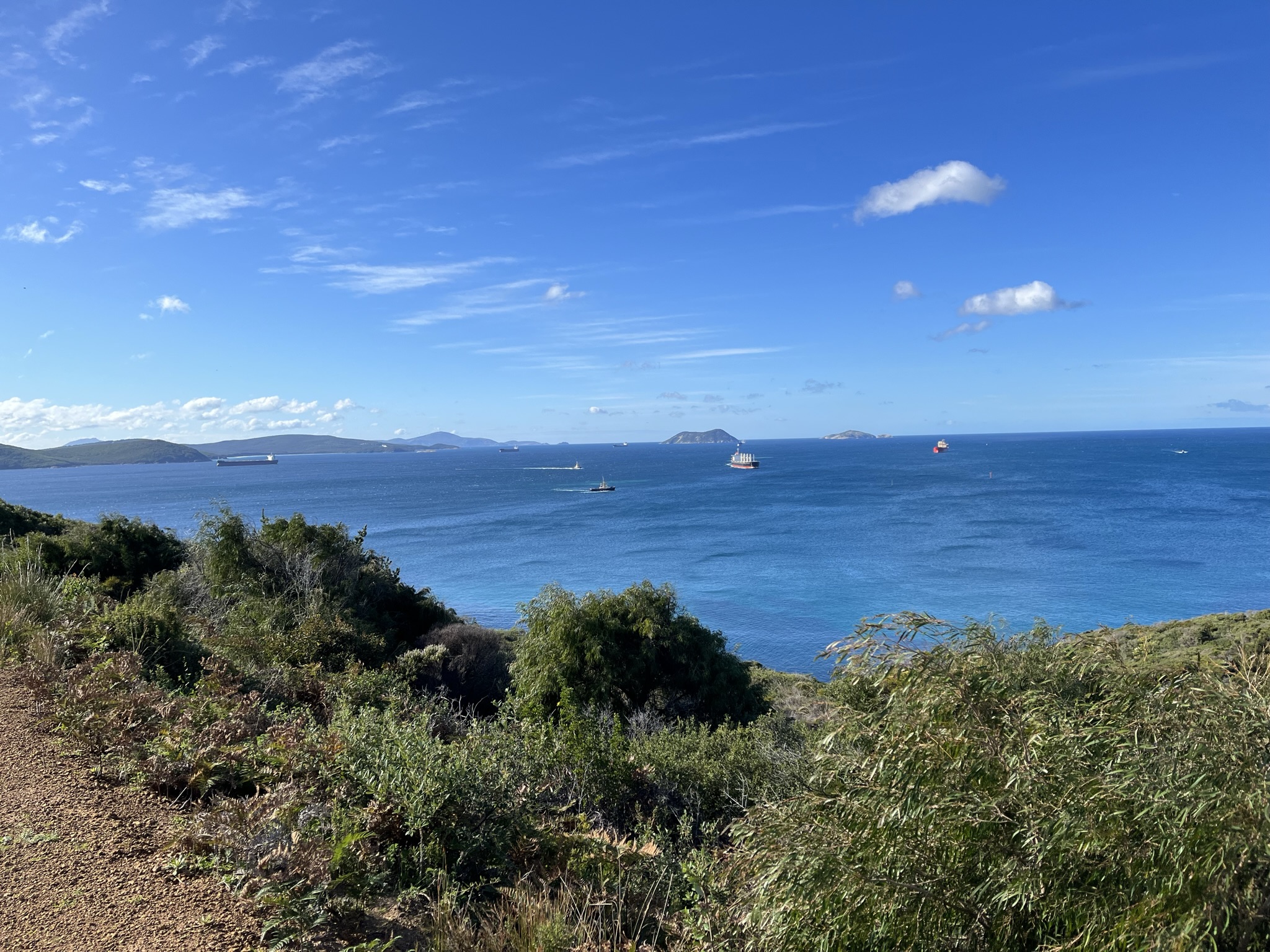
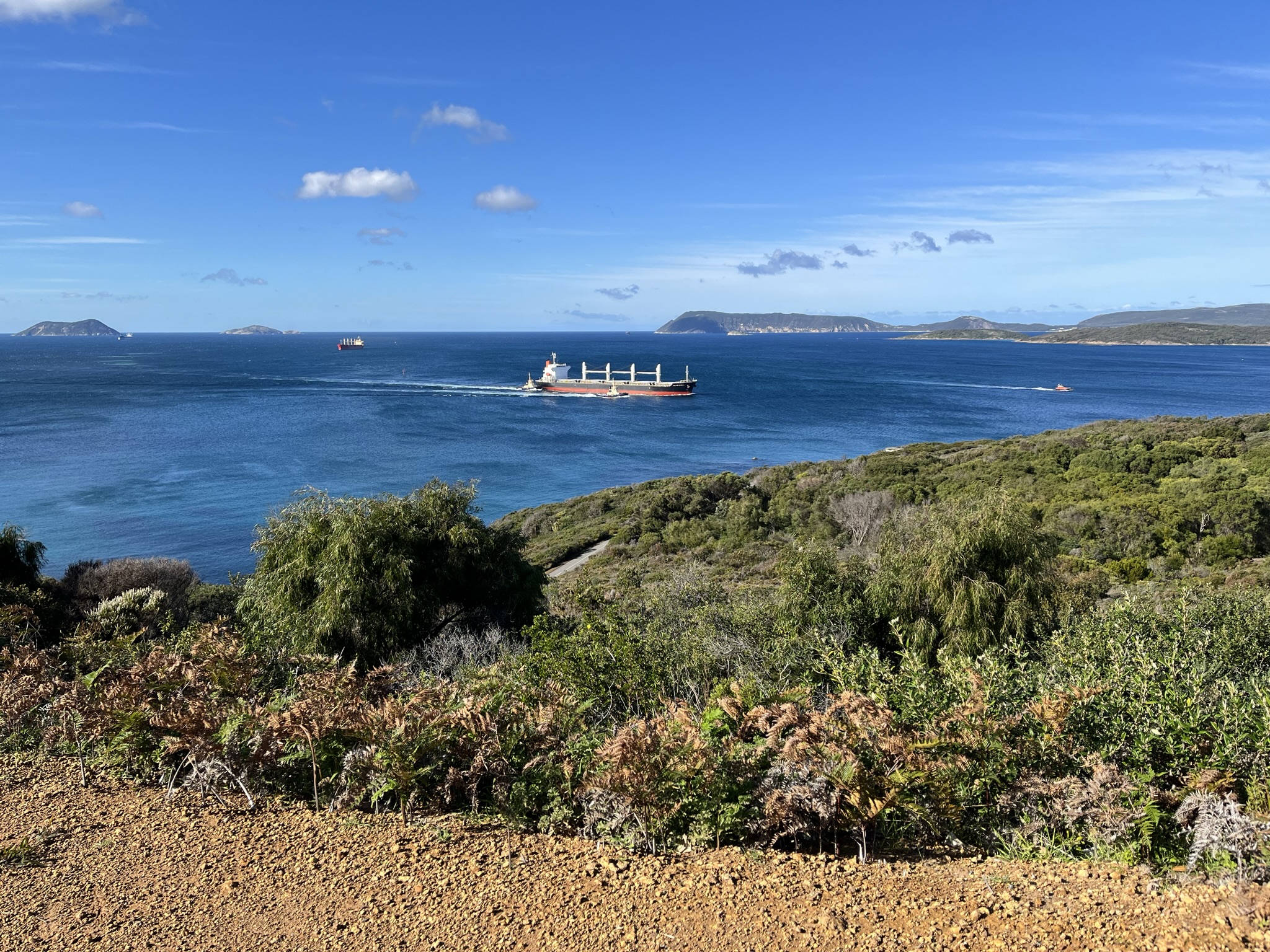
Tugg boats moving ships to wharf Albany WA
PORT & RAIL
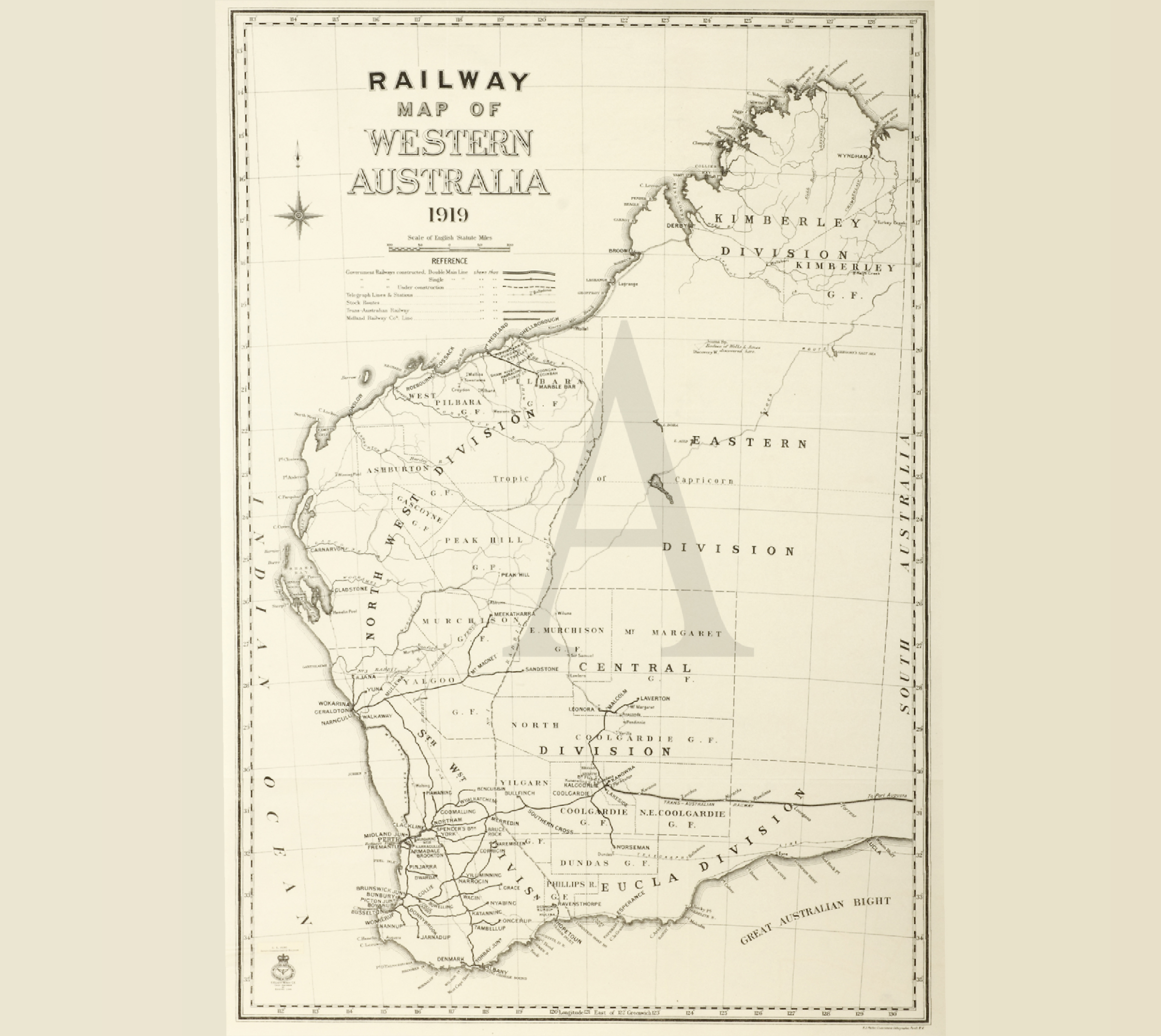
Western Australia has produced 50M tonnes of grain over the last two years. To cope with these successive record harvests, the receival point-to-ship supply chain has to almost treble in capacity to 3M tonnes per month.
The issues are many and are addressed in more details in the referenced articles.
The Grain Bulk Handlers Association focus is on ensuring that the cost of upgrading infrastructure is spread equitably across every tonne of grain using the system and across the life of the assets.
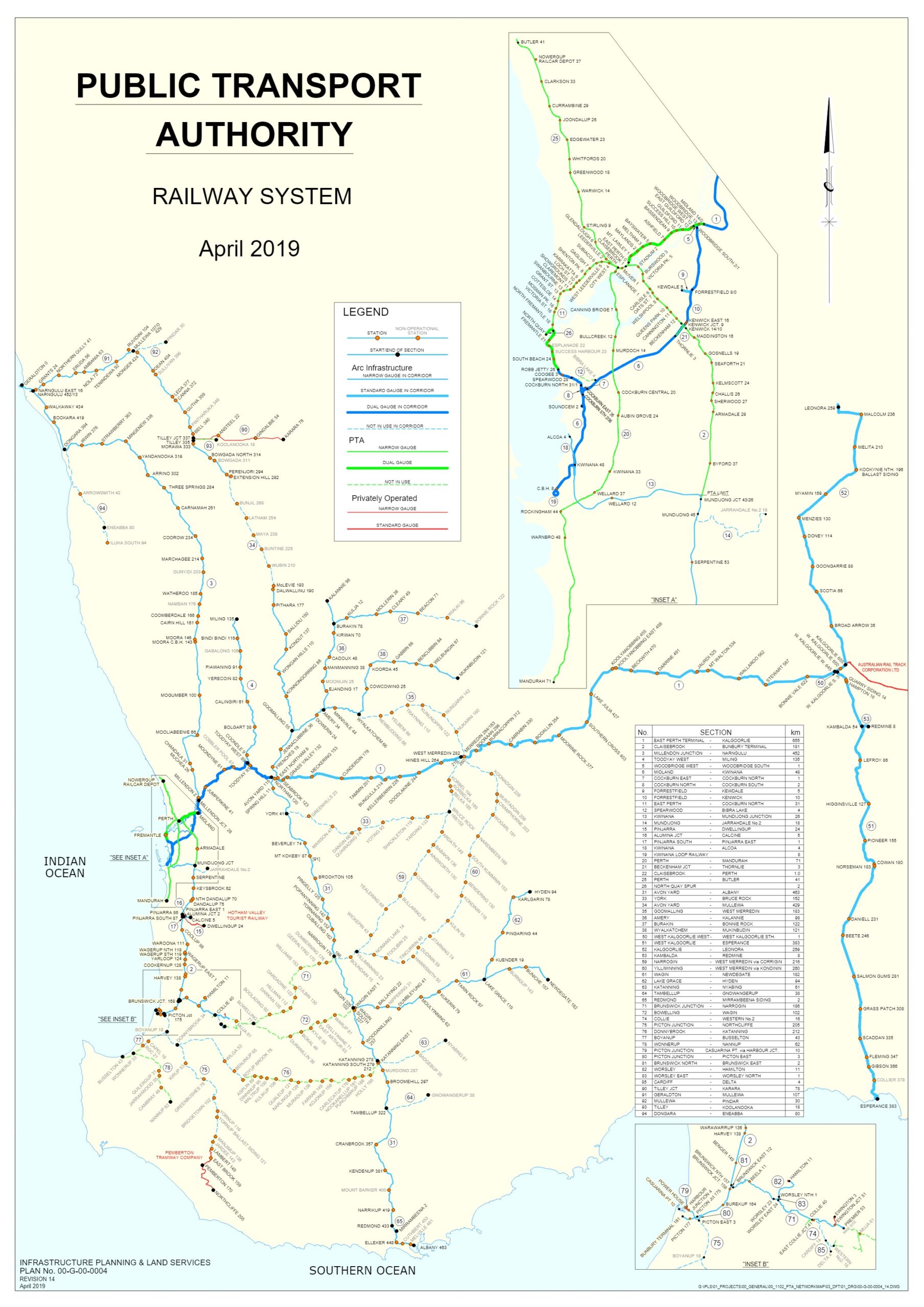
Public Transport Authority Rail Network Map 2019
Non-urban RAIL ROUTES in WA [1]
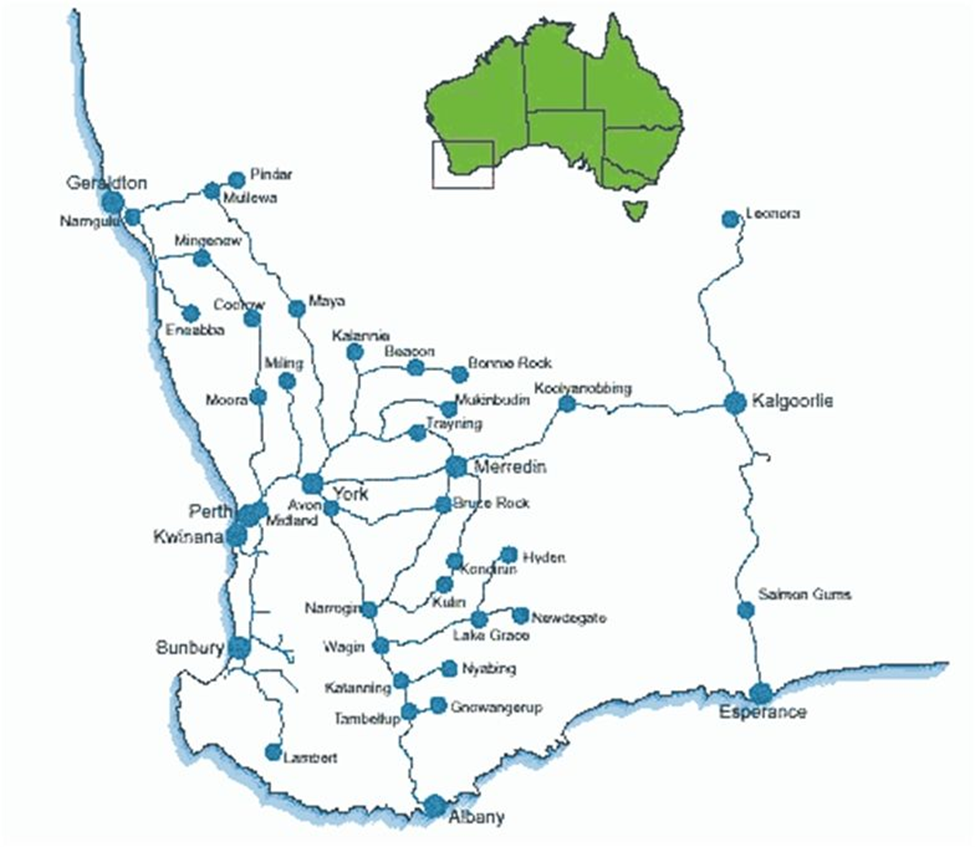
[1] The Economic Regulatory Authority Western Australia.
https://www.erawa.com.au/rail/rail-access/railway-owners
Review of the Western Australian Rail Access Regime – Final Decision Paper
© Government of Western Australia 2020
An effective access regime is important for users and potential users of railways, whose business depends on rail freight, and for railway owners, who have made significant investments in infrastructure and reasonably expect to make a fair return on those assets.
The Western Australian Rail Access Regime (the Regime) is made up of the Railways Act 1998 (the Act) and the Railways Code 2000 (the Code). The object of the Act is to ‘establish a rail access regime that encourages the efficient use of, and investment in, railway facilities by facilitating a contestable market for rail operations’. The Government considers this to mean that the Regime should result in efficient access prices that reflect what would be achieved in a competitive market for rail facilities, allowing for an appropriate return on investment for railway owners.
Many stakeholders highlighted that processes under the Code are inefficient. For example:
The amount of work that is required to be carried out by the regulator and a railway owner in response to an access request could be inefficient in the case of a frivolous access request, however there is no mechanism for the railway owner to contest the validity of an access request before this work occurs;
Timeframes are not specified in certain parts of the Code, which can hinder the negotiation process;
Uncertainty about what is required to be provided to meet certain requirements of the Code can lead to unnecessary disputes; and
Limited guidance about the standard terms and conditions for access can reduce the efficiency of negotiations.
The Issues Paper also raised that while the ERA has followed a standardised approach to consultation on Part 5 instruments, the provisions in the Code do not reflect current ERA practice.
Ref: https://www.wa.gov.au/system/files/2020-02/wa-rail-access-final-decision-paper.pdf
Method for Determining the Weighted Average Cost of Capital for Railway Networks Consultation Paper, May 2018. Economic Regulation Authority Western Australia
This consultation paper provides a summary of the method used by the Economic Regulation Authority (ERA) to estimate the weighted average cost of capital (WACC) for regulated railways. The ERA invites comment on the WACC framework, the method for estimating WACC parameters or any other matter associated with the ERA’s determination of the WACC for 2018.
The Railways (Access) Code 2000 (Code) requires1 the ERA to determine each year a long-term WACC to be applied in the establishment of capital costs for regulated railways2 in that year.
Ref: https://www.erawa.com.au/cproot/19011/2/WACC%20consultation%20paper%202018.pdf
Rail Access Regime
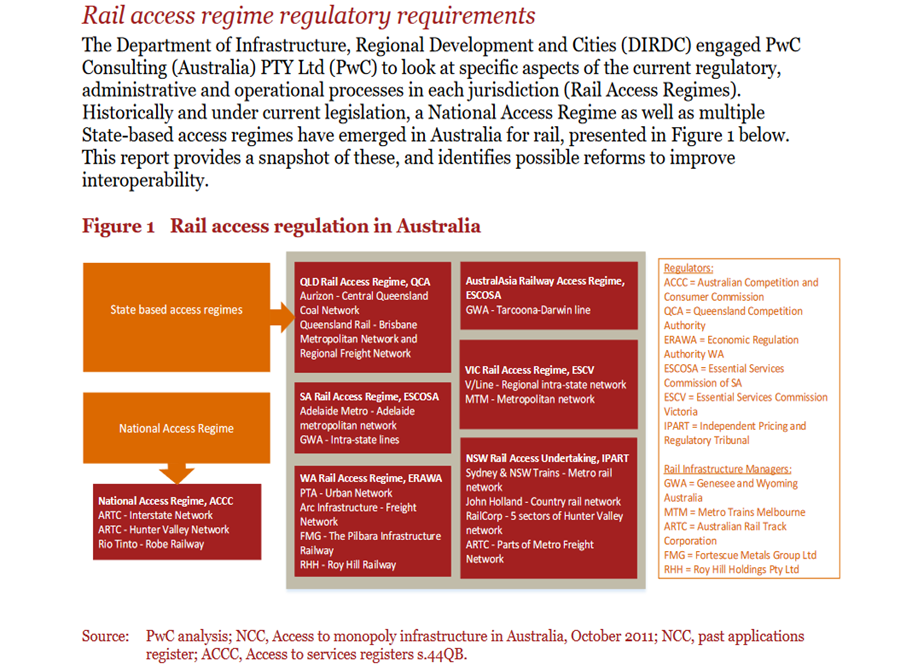
The rail networks in the Pilbara region of WA are privately owned. There are additional issues and questions when considering third party access regulation of infrastructure that businesses are able to privately fund and build for their own use.
Synergies has been engaged by Arc Infrastructure (Arc) to respond on its behalf to the Economic Regulation Authority’s (the ERA’s) Consultation Paper on the method for determining the weighted average cost of capital for railway networks. The following sections provide an overview of our recommendations for each of the WACC parameters, having regard to both the ERA’s commentary in the Consultation Paper, as well as its 2015 Final Decision for the previous WACC review.

